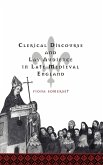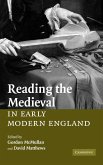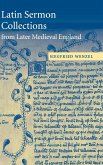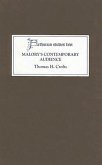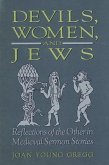Women, Reading, and Piety in Late Medieval England traces networks of female book ownership and exchange which have so far been obscure, and shows how women were responsible for both owning and circulating devotional books. In seven narratives of individual women who lived between 1350 and 1550, Mary Erler illustrates the ways in which women read and the routes by which they passed books from hand to hand. These stories are prefaced by an overview of nuns' reading and their surviving books, and are followed by a survey of women who owned the first printed books in England. An appendix lists a number of books not previously attributed to religious women's ownership. Erler's narratives also provide studies of female friendship, since they situate women's reading in a network of family and social connections. The book uses bibliography to explore social and intellectual history.
Table of contents:
Acknowledgments; Prologue; Introduction: Dinah's story; 1. Ownership and transmission of books: women's religious communities; 2. The library of a London vowess: Margery de Nerford; 3. A Norwich widow and her devout society: Margaret Purdans; 4. Orthodoxy: the Fettyplace sisters at Syon; 5. Heterodoxy: anchoress Katherine Manne and abbess Elizabeth Throckmorton; 6. Women owners or religious incunabula: the physical evidence; Epilogue; Appendices; Notes; Select bibliography; Indexes.
Through seven narratives of individual medieval women, prefaced by an overview of nuns' reading and of women who owned printed books, Mary Erler traces networks of female book ownership and exchange which have so far been obscure, and shows how women were responsible for both owning and circulating devotional books.
Narratives of medieval women offer new insights into networks of female book ownership and exchange.
Table of contents:
Acknowledgments; Prologue; Introduction: Dinah's story; 1. Ownership and transmission of books: women's religious communities; 2. The library of a London vowess: Margery de Nerford; 3. A Norwich widow and her devout society: Margaret Purdans; 4. Orthodoxy: the Fettyplace sisters at Syon; 5. Heterodoxy: anchoress Katherine Manne and abbess Elizabeth Throckmorton; 6. Women owners or religious incunabula: the physical evidence; Epilogue; Appendices; Notes; Select bibliography; Indexes.
Through seven narratives of individual medieval women, prefaced by an overview of nuns' reading and of women who owned printed books, Mary Erler traces networks of female book ownership and exchange which have so far been obscure, and shows how women were responsible for both owning and circulating devotional books.
Narratives of medieval women offer new insights into networks of female book ownership and exchange.


